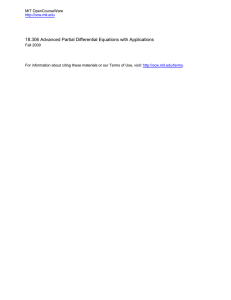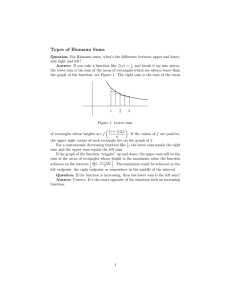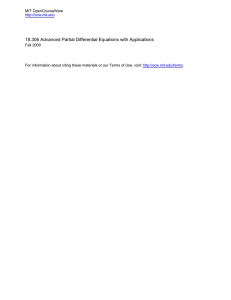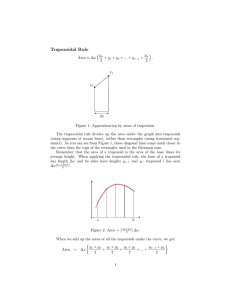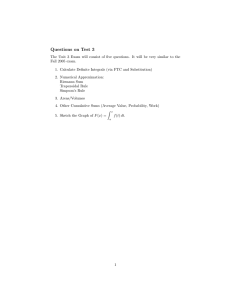Riemann Sum Practice
advertisement
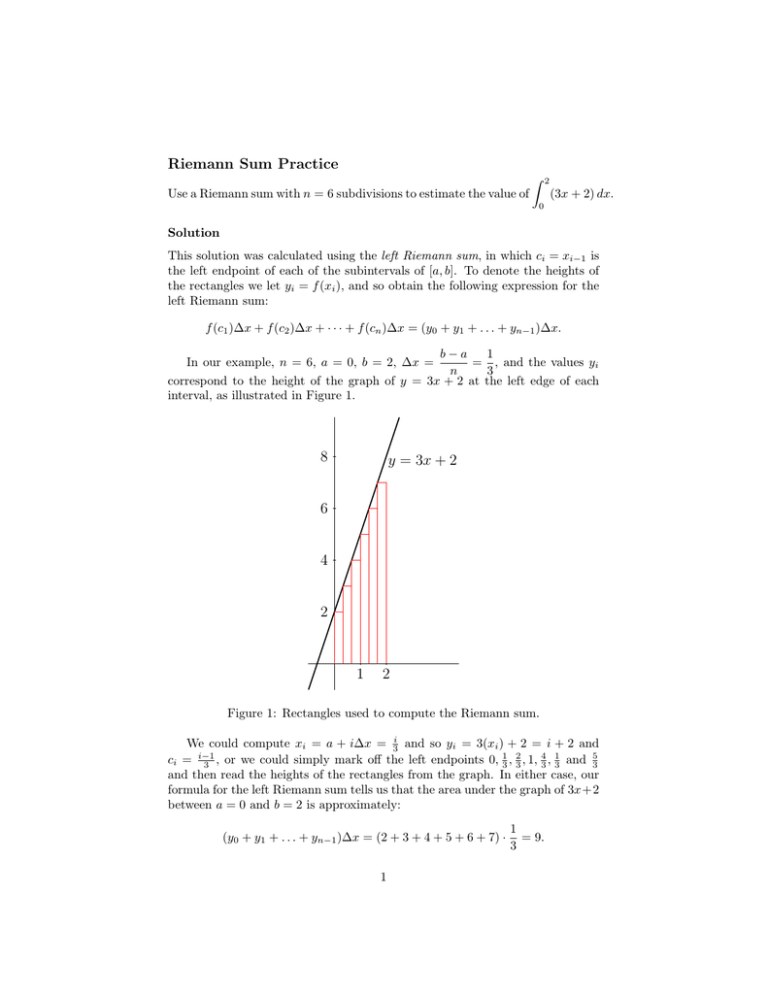
Riemann Sum Practice � 2 Use a Riemann sum with n = 6 subdivisions to estimate the value of (3x + 2) dx. 0 Solution This solution was calculated using the left Riemann sum, in which ci = xi−1 is the left endpoint of each of the subintervals of [a, b]. To denote the heights of the rectangles we let yi = f (xi ), and so obtain the following expression for the left Riemann sum: f (c1 )Δx + f (c2 )Δx + · · · + f (cn )Δx = (y0 + y1 + . . . + yn−1 )Δx. b−a 1 In our example, n = 6, a = 0, b = 2, Δx = = , and the values yi n 3 correspond to the height of the graph of y = 3x + 2 at the left edge of each interval, as illustrated in Figure 1. 8 y = 3x + 2 6 4 2 1 2 Figure 1: Rectangles used to compute the Riemann sum. We could compute xi = a + iΔx = 3i and so yi = 3(xi ) + 2 = i + 2 and ci = i−3 1 , or we could simply mark off the left endpoints 0, 13 , 23 , 1, 43 , 13 and 53 and then read the heights of the rectangles from the graph. In either case, our formula for the left Riemann sum tells us that the area under the graph of 3x+2 between a = 0 and b = 2 is approximately: (y0 + y1 + . . . + yn−1 )Δx = (2 + 3 + 4 + 5 + 6 + 7) · 1 1 = 9. 3 � Because 2 (3x + 2) dx is the area of a trapezoid with width 2 and sides of 0 height 2 and 8, we can easily check our work: � 2 2+8 (3x + 2) dx = 2 · = 10. 2 0 From the figure we see that the left Riemann sum slightly underestimates the area, so our answer of 9 is probably correct. 2 MIT OpenCourseWare http://ocw.mit.edu 18.01SC Single Variable Calculus�� Fall 2010 �� For information about citing these materials or our Terms of Use, visit: http://ocw.mit.edu/terms.
